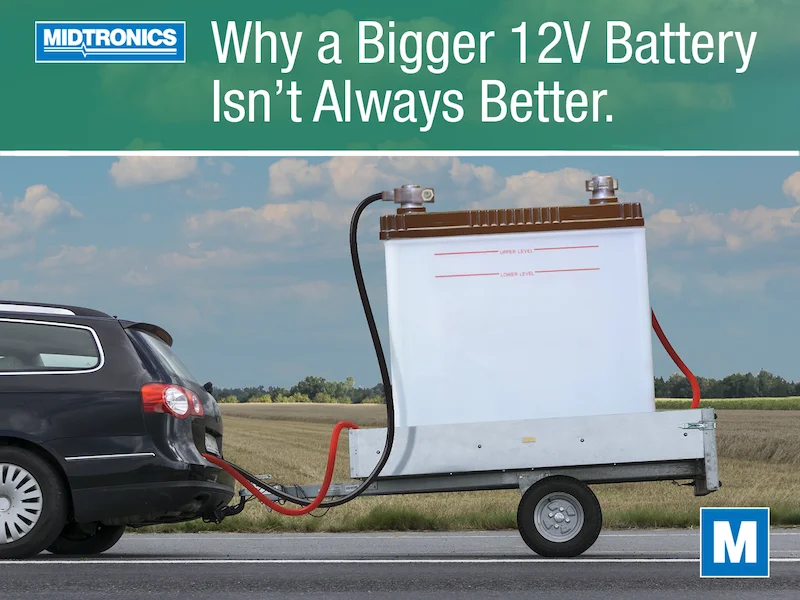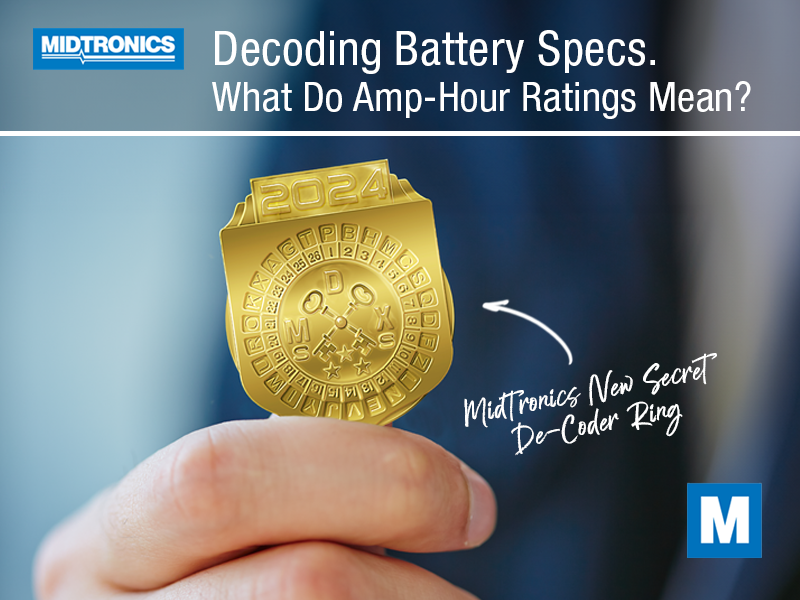In the realm of automotive engineering, every part of the electrical system has been precisely analyzed and balanced, especially when it comes to the heart of a vehicle – the 12-volt battery. While the idea of a bigger battery may seem like an obvious choice for car enthusiasts or for repair shops to advise as replacements, automakers take a meticulous approach in selecting the right power source to ensure optimal performance and longevity for the vehicle.
Since a physically larger 12-volt battery can’t be secured in a battery tray or prevented from moving with the hold-downs, it’s no surprise that they shouldn’t be used. But what about batteries with larger capacities than the factory installed? Delve into the intricate process car manufacturers use to choose the correct 12-volt battery and the consequences of a battery larger than intended for a vehicle.
The Delicate Art of Battery Selection
Car manufacturers invest considerable time and resources in determining the ideal battery specifications for their vehicles. The 12-volt battery serves a dual purpose: it provides the initial power to start the engine and acts as a stable power source for various electrical components when the engine is off. The key factors considered in battery selection include the vehicle’s size, weight, power requirements, and the climate conditions it’s expected to operate in.
At the end of a battery’s typical three-to-five-year lifespan, vehicle owners might ask for a higher capacity battery to replace the OEM size. Or, a shop might suggest a battery with higher cold cranking amps and reserve capacity, if for no other reason than the correct size is out of stock. The dimensions might even fit.
While a larger battery might seem like a simple solution for increased power needs, it’s not always the best fit for every vehicle. Automakers strike a delicate balance between providing enough power for the vehicle’s demands and avoiding unnecessary weight, cost, and space constraints, and messing with that can change a battery’s longevity and how vehicle systems operate.
Consequences of Choosing a Small Battery are Widely Known
Cranking amperage is a critical metric that determines a battery’s ability to start an engine, particularly in cold weather conditions. When the cranking amperage is too low for a vehicle, it can lead to sluggish engine starts or, in extreme cases, a failure to start altogether. This is because the battery struggles to deliver sufficient power to turn the engine over, resulting in increased wear on the starter motor and other related components. Moreover, prolonged use of a battery with inadequate cranking amperage can lead to a reduced lifespan, as the constant strain on the battery depletes its capacity over time.
These concerns are relatively well-known, and it’s seldom the case that someone will ask for or recommend a smaller battery be installed. To avoid these symptoms, automakers have meticulously calculated the necessary cranking amperage based on the specific requirements of each vehicle, and even when symptoms aren’t evident in moderate climate conditions, they’re bound to show up when it gets harsh.
The Pitfalls When Cranking Amperage is Too High
While it might seem counterintuitive, having a battery with cranking amperage significantly higher than what the vehicle requires can also pose challenges. Excessive cranking amperage can lead to increased stress on the vehicle’s electrical system, potentially causing damage to sensitive components such as the starter motor, alternator, and even the engine control unit. Now, these symptoms might not ever present themselves, but the potential is there, especially for a strained alternator that could fail.
Moreover, a battery with excessively high cranking amperage may have a shorter lifespan because it tends to discharge more rapidly during use, and the charging system isn’t intended to replenish it. This can result in frequent recharging cycles, putting additional strain on the batter, preventing it from charging fully, and contributing to premature wear.
An Improper Pairing Can Be Detrimental for Advanced Vehicles
Another lesser-known effect of choosing higher capacity batteries than the factory recommends is issues with battery management systems. In luxury cars predominantly but growing in popularity with mainstream models, BMS technology takes into consideration the battery’s age and status to verify its condition and make sure it’s in the safe operating environment the car needs. It’s established for the battery size the factory uses.
Should the battery be replaced for a different one, whether that’s a larger cranking amperage or even a different battery chemistry – like replacing an AGM battery for a standard lead-acid type – the BMS system can trigger a fault code. That could mean a simple check engine light is turned on, or it could go so far as to disable the vehicle until the issue is corrected and codes are cleared.
And because parameters might be outside the expected range for onboard systems, it can even affect more common systems such as auto start-stop.
What It Means for Battery Diagnostics and Repairs
The selection of the correct 12-volt battery for a vehicle is a nuanced process that involves a meticulous balance between power requirements, size constraints, and environmental considerations. While a bigger battery might seem like a tempting solution, it’s essential to trust in the expertise of car manufacturers who carefully calculate the optimal specifications for each vehicle. Striking the right balance ensures reliable engine starts, prolongs the lifespan of electrical components, and contributes to the overall efficiency and longevity of your vehicle’s electrical system.
For repair shops, concerns that might seem unrelated to the battery’s health could actually have a direct impact on your diagnosis. It pays to not just test the battery that’s installed in the vehicle, but also to verify that it’s the correct BCI Group Size and in the correct range of cranking amperages that the vehicle is designed to use. It’s a major reason why scanning a vehicle’s VIN and entering the cranking amps for a battery test is so crucial to accurate testing.




